Sharpest-Ever Night Sky Photos: Gallery
Magellan Telescope with MagAO’s Adaptive Secondary Mirror
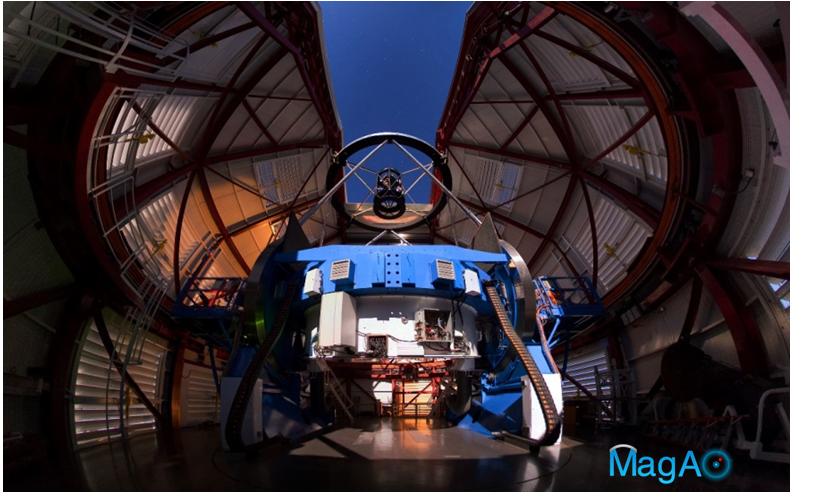
The Magellan Telescope with MagAO’s Adaptive Secondary Mirror (ASM) mounted at the top looking down some 30 feet onto the 21-foot diameter primary mirror, which is encased inside the blue mirror cell. Image released Aug. 20, 2013.
Magellan Telescope Details Orion Nebula
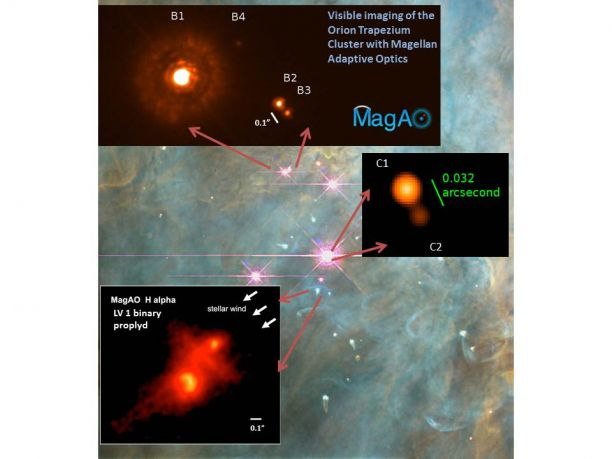
Equipped with the newly developed MagAO adaptive optics system, the Magellan Telescope revealed details about the Orion nebula. The background image, taken with the Hubble Space Telescope, shows the Trapezium cluster of young stars (pink) still in the process of forming. The middle inset photo reveals the binary nature of the Theta Ori C star pair. The bottom insert shows a different binary young star pair shaped by the stellar wind from Theta 1 Ori C. Image released Aug. 20, 2013.
VisAO Camera and MagAO Wavefront Sensors
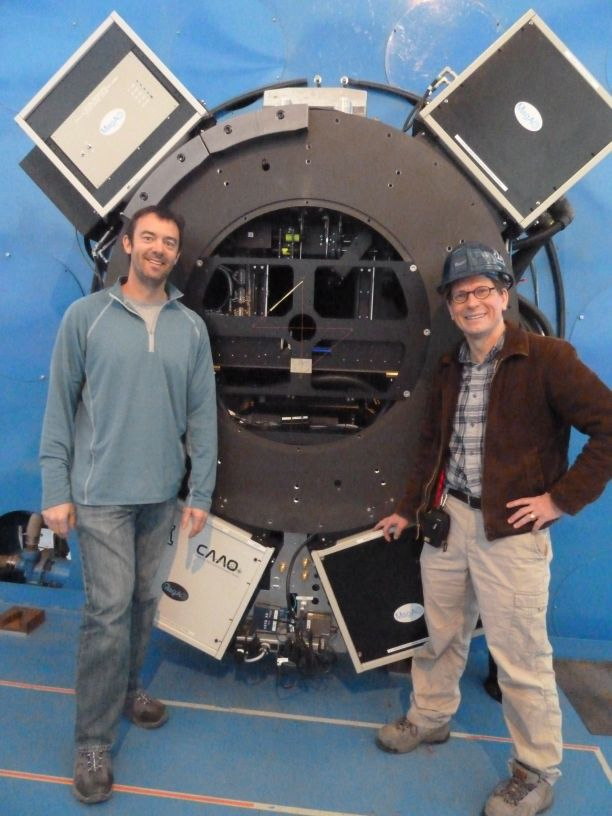
UA NASA Sagan Fellow and VisAO instrument scientist Jared Males (left) and UA Astronomy Professor and MagAO project scientist Laird Close with the VisAO camera and MagAO wavefront sensors at the focus of the 6.5m Magellan telescope that were used to make the visible wavelength images. Image released Aug. 20, 2013.
Power of Visible Light Adaptive Optics

The power of visible light adaptive optics: On the left is a “normal” photo of the theta 1 Ori C binary star in red light. The middle image shows the same object, but with MagAO’s adaptive optics system turned on. Eliminating the atmospheric blurring, the resulting photo becomes about 17 times sharper, turning a blob into a crisp image of a binary star pair. These are the highest resolution photos taken by a telescope. Image released Aug. 20, 2013.
Magellan Adaptive Optics Image of Orion 218-354
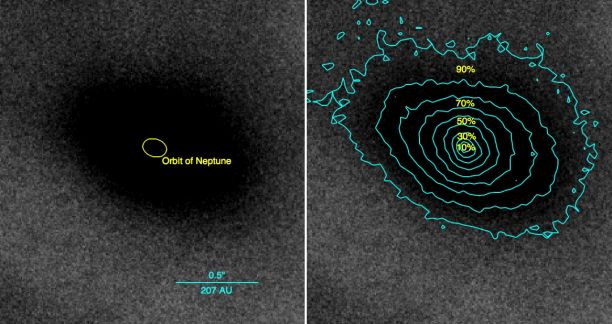
A Magellan Adaptive Optics image of Orion 218-354 silhouette after removal of light from the central star. The image on the left shows the dark silhouette of the disk against the bright background light of the Orion nebula. The image on the right shows how the new capabilities allowed astronomers to probe of nebular light passing through the disk, telling them about the distribution of gas and dust. Image released Aug. 20, 2013.
Binary Star Shaped by Another's Stellar Wind
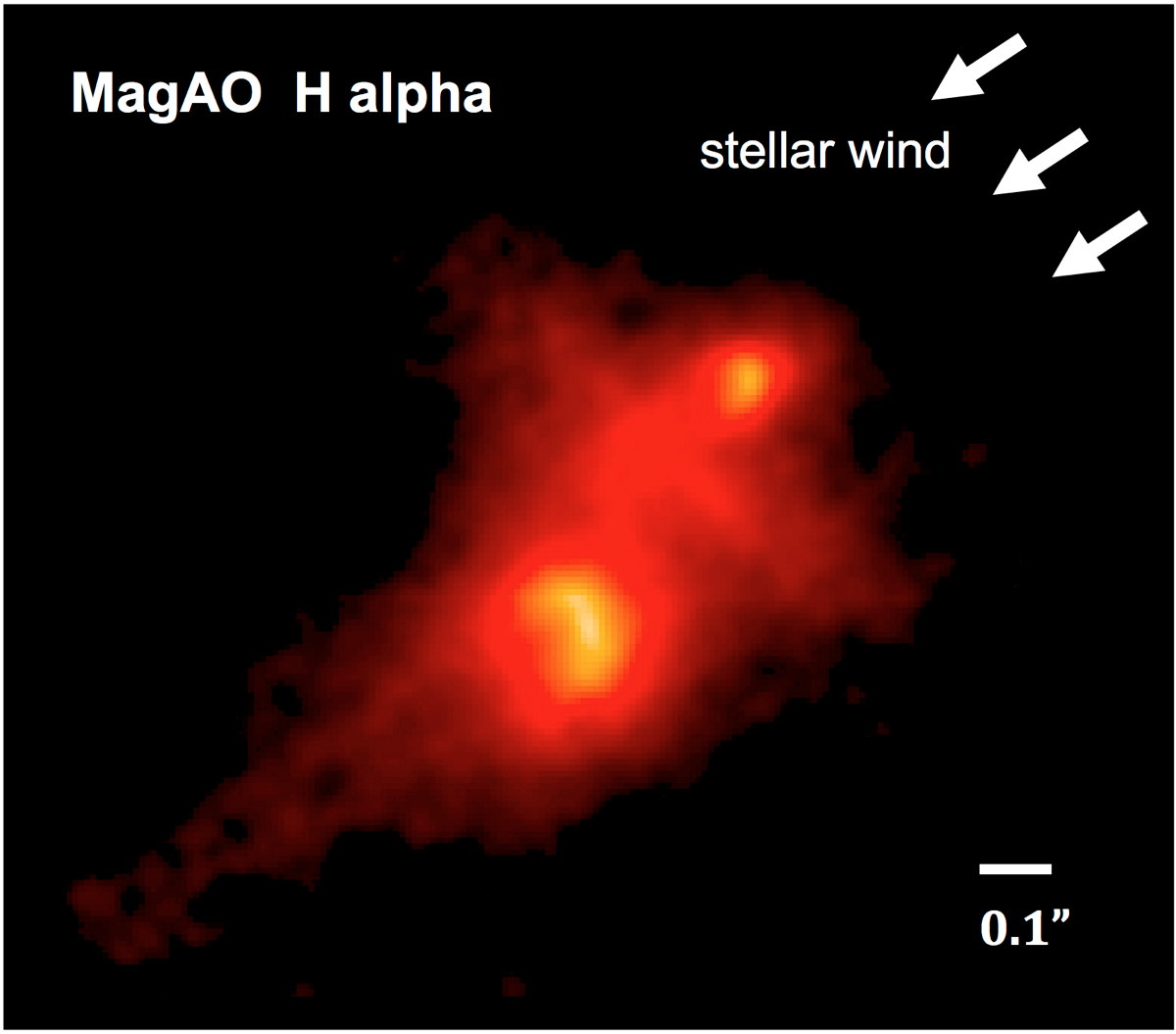
This image, taken by a new camera and adaptive optics system installed on the Magellan Telescope in Chile, shows the binary young star pair "LV-1" being shaped by the stellar wind from another binary star called Theta 1 Ori C.
Get the Space.com Newsletter
Breaking space news, the latest updates on rocket launches, skywatching events and more!
Join our Space Forums to keep talking space on the latest missions, night sky and more! And if you have a news tip, correction or comment, let us know at: community@space.com.

Space.com is the premier source of space exploration, innovation and astronomy news, chronicling (and celebrating) humanity's ongoing expansion across the final frontier. Originally founded in 1999, Space.com is, and always has been, the passion of writers and editors who are space fans and also trained journalists. Our current news team consists of Editor-in-Chief Tariq Malik; Editor Hanneke Weitering, Senior Space Writer Mike Wall; Senior Writer Meghan Bartels; Senior Writer Chelsea Gohd, Senior Writer Tereza Pultarova and Staff Writer Alexander Cox, focusing on e-commerce. Senior Producer Steve Spaleta oversees our space videos, with Diana Whitcroft as our Social Media Editor.









